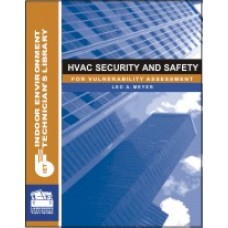In the past few months, HVAC contractors have learned a new skill — dealing with customers from a distance. Many hope this ends with the pandemic and everyone returns to the face-to-face meetings enjoyed before March. That may not happen. The pandemic accelerated trends already moving away from in-person contact. Speakers at this year’s EGIA Lead conference shared the best practices for adapting to this new normal.
Matt Chambers, director of home services sales at Podium, said technology makes it more convenient to communicate online rather than in-person. Consumers today prefer to send texts, emails, and messages over social media, rather than have someone come to their houses. Chambers said they want an experience that is convenient, frictionless, and efficient.
“Before the current events, customer communication preferences were already shifting,” Chambers said. “The businesses that take the time to learn how to navigate this communication with their customers are going to continue to win.”
Most consumers are shopping online, said Haylee Sonntag, marketing specialist at Podium. They want to complete that process the same way. Sonntag said this makes consumers feel at ease doing business with an HVAC contractor. She said all information and reviews online must be up to date. If they’re not, or the HVAC contractor’s listing proves hard to find, the contractor loses out on in-market leads.
“These customers have a problem your business can solve,” Sonntag said. “If they don’t find you, they are going to go to your competitor.”
Once a consumer finds an HVAC contractor, the sales process begins. The bad news is many people remain reluctant about having strangers enter their homes. Many didn’t care for salespeople in their homes before the pandemic, said Peter Ochs from Silver Bullet Price Page. The good news is these customers have grown accustomed to using Zoom and other video conferencing software.
Role-Playing an Online Sale
This actually makes the sales process easier in some ways. Both spouses can attend the sales presentation, even if they are in separate locations. Ochs presented a role-playing video featuring David Holt of the National Comfort Institute as a salesperson for an HVAC contractor and Erica Leonor of Power Selling Pros and her real-life husband Geovanny as a married couple in need of a new air conditioner.
The presentation started with Leonor calling into the HVAC contractor. The customer service representative scheduled a Zoom call and recommended that Leonor have a mobile device handy to show different parts of the system to the caller.
Ochs said before the Zoom call, the contractor staff researches the home using online resources, such as Zillow. They also search their records to see if the firm worked on any homes in the area. This helps in two ways, Ochs said. First, home builders tend to use a few designs for multiple homes in one neighborhood. This gives the HVAC contractor a better idea of the mechanical set-up. Second, the salesperson can now present the couple with testimonials from their neighbors.
These testimonials, along with staff bios, are sent to the perspective customers before the call. When the call starts, the salesperson asks a series of basic questions about who lives in the home and how long they plan to live there. Other questions include how they use the home, such as how often they have gatherings, if any one has allergies, and how high the energy costs are. The salesperson then uses a graphic display to rank four categories: comfort, safety, efficiency, and health.
After this basic discussion, Holt instructed Leonor to take pictures of the thermostat and the HVAC system, including photos of any labels. He asked if she was comfortable taking off the furnace door, and offered to send over a technician at no cost if she was not. Holt walked her through the process.
Finally, Holt presented Leonor and Dale with a range of prices and financing options. The presentation included various discounts and adjustments. Once the couple selected the best option for their needs, they submitted a credit application and were approved while still on the call. The call ended after setting an installation appointment.
Ochs said in addition to creating a consumer-friendly sales process, this method saves time for an HVAC contractor’s staff. They no longer have to spend hours in traffic while making sales calls.











